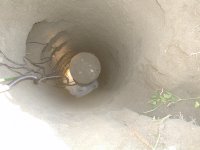Home Buyers Will Pay for Soil, Won't Pay For Dirt
In 2003, the Snohomish County Public Works Department published a remarkable manual with a simple title: Building Soil (pdf). Promoting sediment-free stormwater, it encouraged builders to embrace the wisdom of retaining native soil and vegetation, and to question the value of turning soil into dirt for no good reason. From a building perspective, soil is a valuable construction material manufactured from a low cost/ low value soil resource feedstock. The thinking goes like this: Manipulating soil tidies up a site and adds value. Stormwater regulations interfere with the ability to add value, thus the disconnect.
Enter the Washington Organic Recycling Council which has a new site, www. buildingsoil.org, with a new and refreshingly non-regulatory spin for convincing builders to buy into the principles in the Building Soil manual. The pitch goes like this: Avoiding disturbance around the building footprint, in a sense, doing nothing, confers a marketable value on that soil resource.
New home buyers say they are happy to pay more for a healthy, easy to care for landscape – and that starts with the soil.A timely message in a buyers' market.







